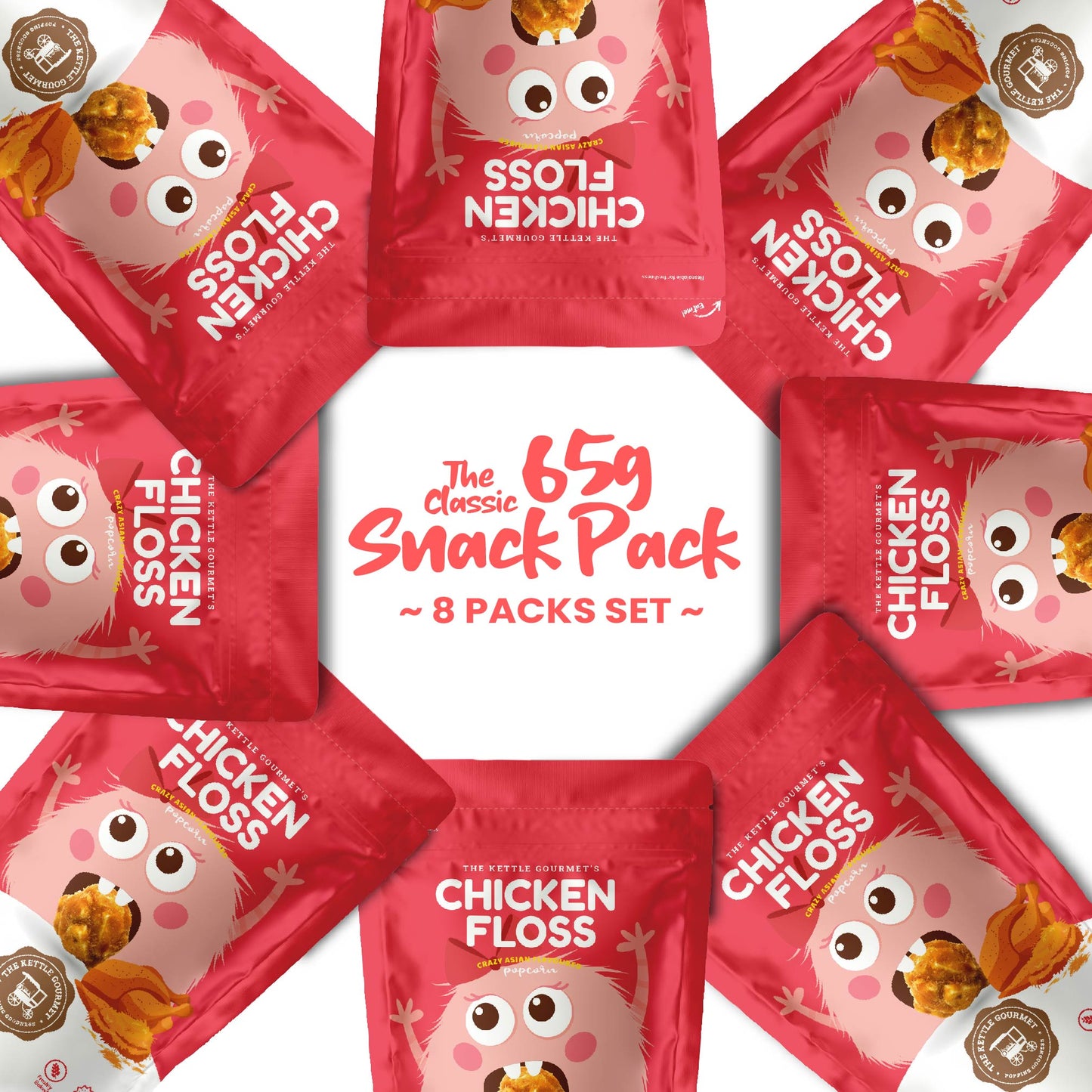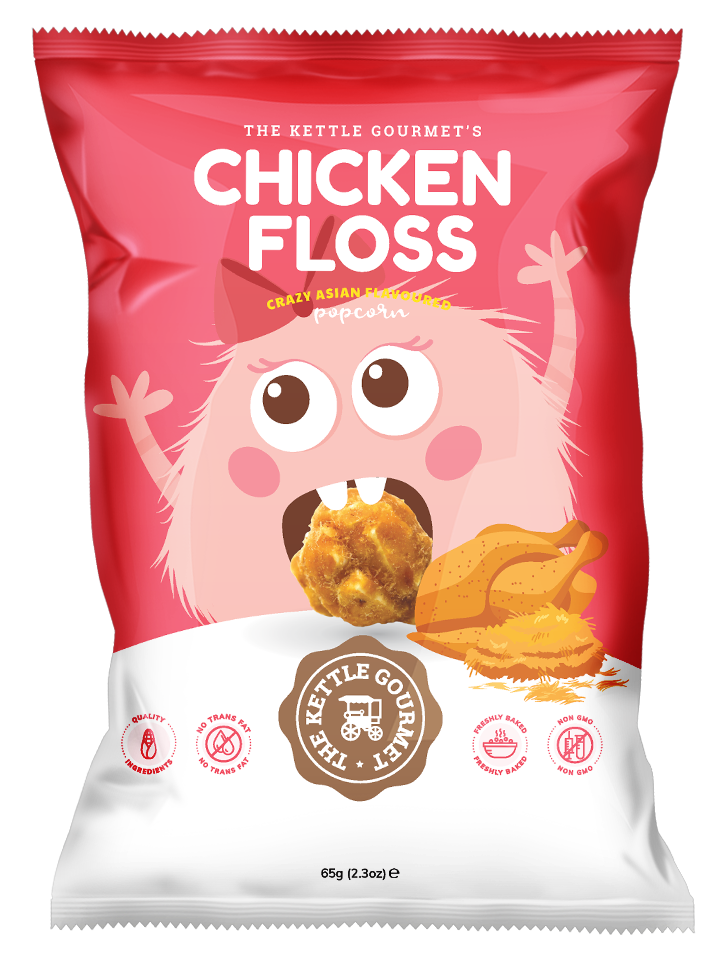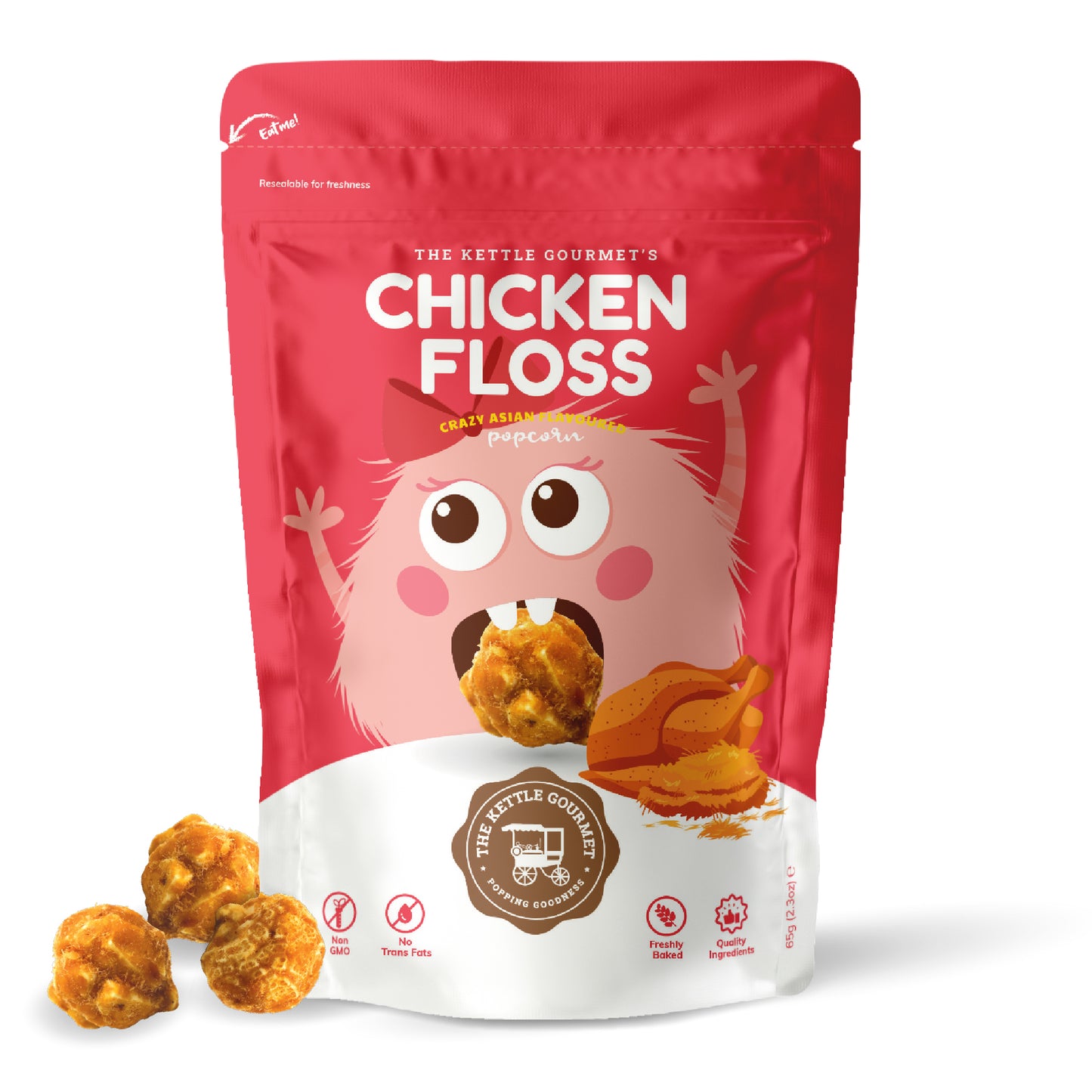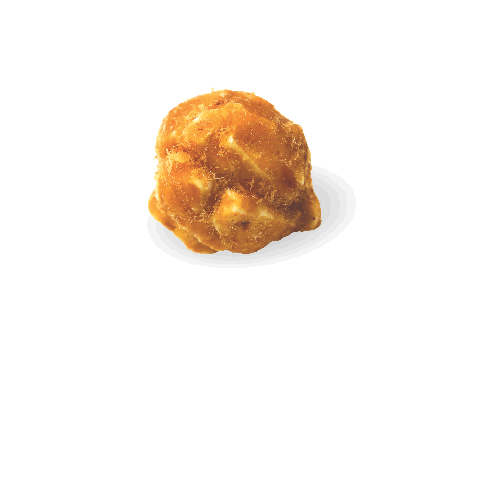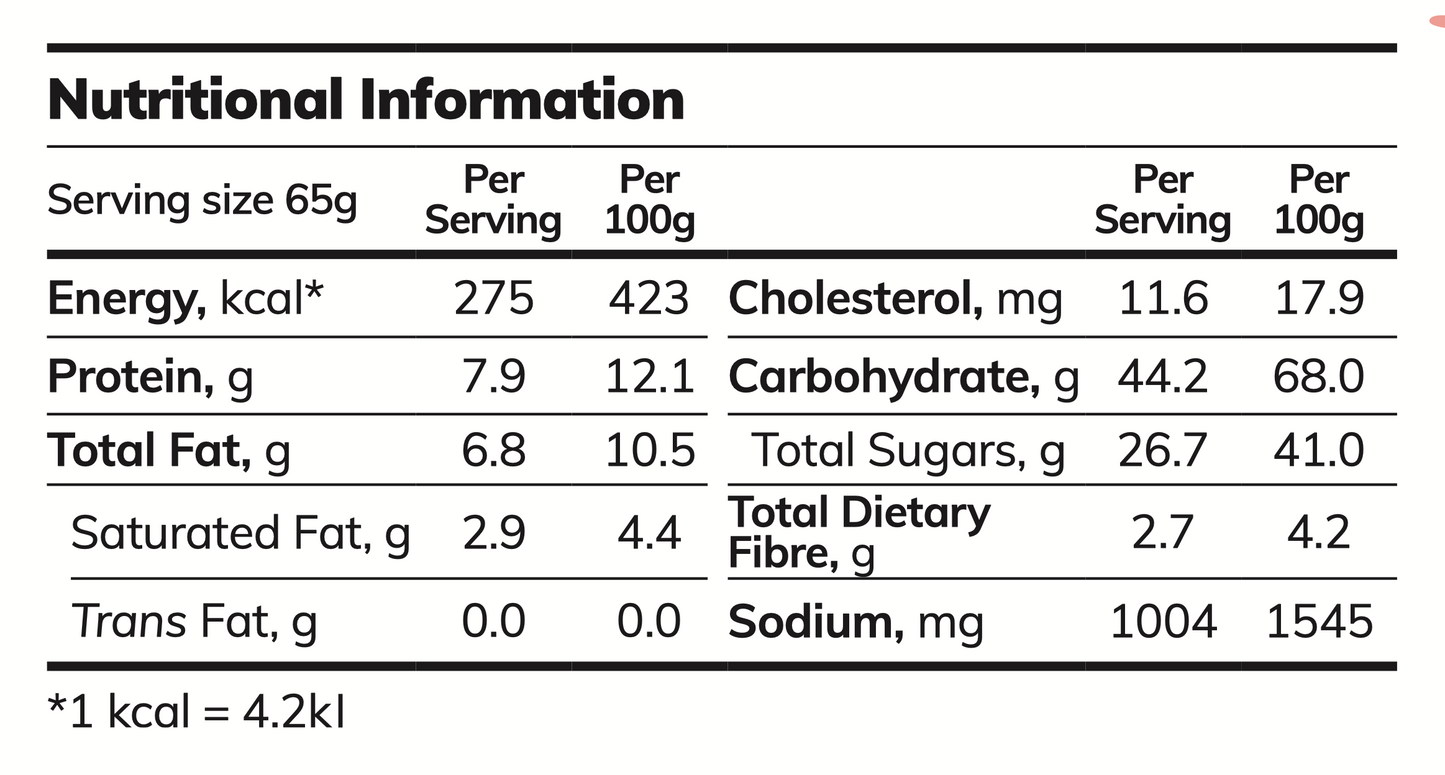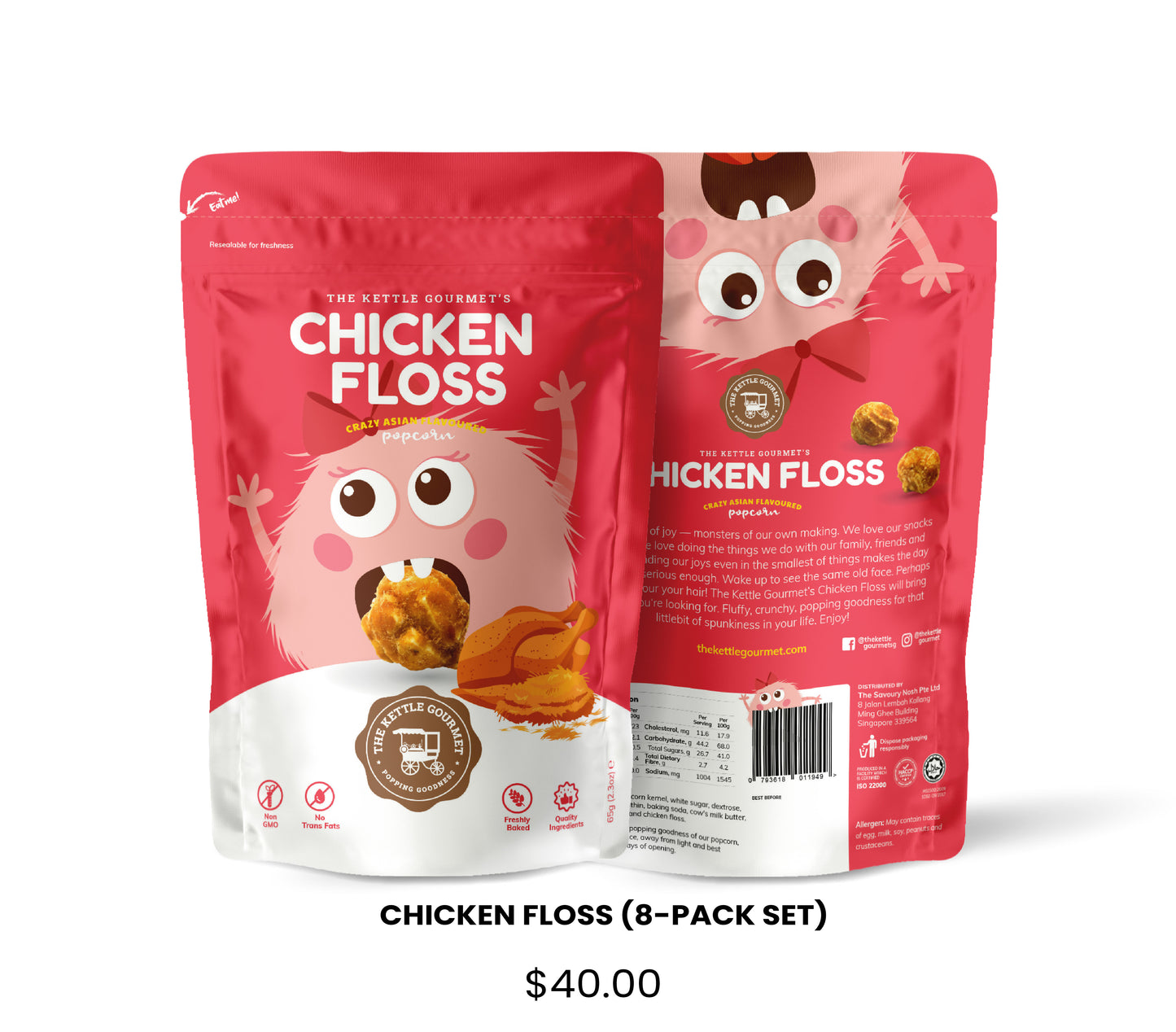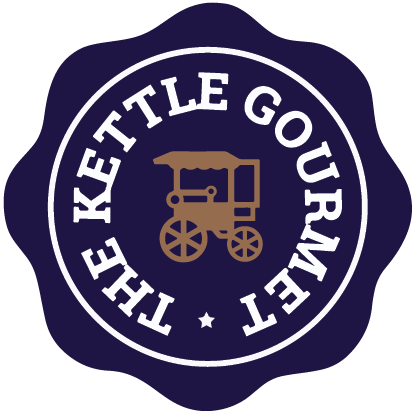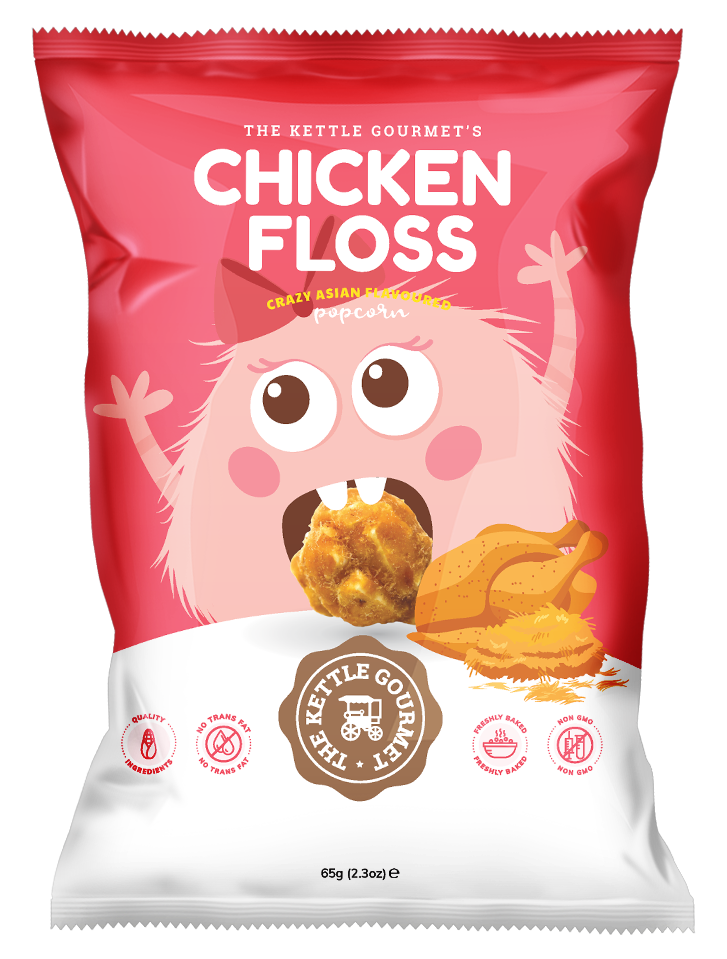Chicken Floss Popcorn (8 Packs x 65g)
Chicken Floss Popcorn (8 Packs x 65g)
Loved by Singaporeans, our crispy Chicken Floss snack is baked until golden brown. The alluring flavour profile will linger on your taste bud and leave you wanting for more!

15% OFF
Discount automatically applied at checkout.
Couldn't load pickup availability
DESCRIPTION
DESCRIPTION
Like your auntie next door, Kelly the Fussy Floss knows exactly what she wants the way she wants it. You may call her fussy, but we think she's assertive.
The Kettle Gourmet’s Chicken Floss will bring about the change you need to perk you up. It's not about being fussy but knowing what you want. Fluffy and crunchy popping goodness to live your life with a little spunk and attitude. Part of the Crazy Asian Flavoured popcorn series. Get all the flavours here!
INGREDIENTS & ALLERGEN INFO
INGREDIENTS & ALLERGEN INFO
INGREDIENTS
Cane sugar, non-Gmo corn kernel, glucose, cow’s milk butter, seasoning, soy lecithin, baking soda.
ALLERGEN
May contain traces of egg, milk, soy, peanuts and crustaceans.
DETAILS
DETAILS
STORAGE
Store in a cool, dry place, away from light and best consumed within 3 days of opening.
SIZE & WEIGHT
Approximately 140mmW x 200mmH x 40mmB (per pack). 65g (2.3oz.)
PACKAGING MATERIALFood grade foil pack (puffed up) for added freshness.
